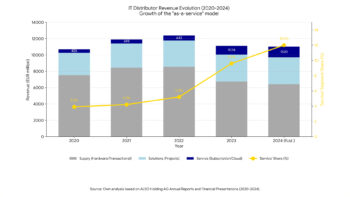At the end of 2023, when Broadcom finalised its acquisition of VMware, customer reactions were mixed – ranging from scepticism to hope that such a large deal would bring stability. It quickly became apparent that the new owner had other priorities than continuing on its current course. Licensing changes, a reduction in the partner channel, higher prices and a tough audit policy began to spread through the market like an echo in a tunnel. In 2025, the first consequences are already visible: growing customer dissatisfaction, migrations and lawsuits. But the real question is: is this just a temporary blip or the start of a permanent reset in the world of virtualisation?
VMware: when market advantage starts to drag
For more than two decades, VMware has been the foundation of IT infrastructure in thousands of companies – from startups to major industrial enterprises. The company’s solutions set the standard for virtualisation, automation and IT asset management. However, following its acquisition by Broadcom, what had previously been an advantage – a broad customer base and ubiquity in the data centre – began to turn against the company.
The change in the licensing model to full subscription, the elimination of the indirect channel in many countries and the withdrawal of support for some partners surprised even the most loyal users. In addition, Broadcom began to implement an aggressive audit policy and product prices increased – in some cases by several times.
Implications? Lawsuits from large customers (Siemens, AT&T, among others), public open letters and emerging requests for alternatives. VMware ceased to be the default choice – and began to be treated as expensive ballast.
The alternatives are there – but with limitations
In theory, customers have a choice. Market alternatives to VMware exist and are growing rapidly. The problem is that none of them offer a simple ‘copy-paste’ of the infrastructure – and the cost and time to migrate is often prohibitive.
Gartner data shows that moving an environment from VMware can take between 18 and 48 months and cost between $300 and $3,000 per VM. And that’s assuming the company has the right competencies and a business continuity plan in place.
Four types of alternatives dominate the market:
- Proxmox VE – open source, lightweight and low-cost, favoured by small companies and SMEs, but lacking enterprise-class support.
- Nutanix – full HCI platform, strong cloud integration, but complex and relatively expensive.
- Microsoft Hyper-V / Azure Stack – a natural choice for MS environments, but requires architecture customisation.
- Red Hat Virtualisation / OpenShift – a good solution for Linux-based and containerised environments, but with limited compatibility against classic VMware deployments.
From the CIO’s perspective, the problem is not just about cost. Migration means a paradigm shift – from management tools to CI/CD processes to security policies. It is a strategic decision that takes time and courage – and sometimes political support from the board.
Not everyone will leave – and that’s a strategy too
While the wave of discontent is real, a mass exodus of customers is not expected any time soon. VMware has a strong presence in sectors that don’t like risk – financial, industrial, energy. For many of these organisations, changing their virtualisation environment is a multi-year project, often conflicting with certification cycles, audits and industry regulations.
In addition, many users’ hands are tied – even if they would like to migrate, they cannot abandon their subscription without incurring additional costs. And the process of migrating to a new solution often requires parallel maintenance of the old environment, which generates double expenses.
As a result, some customers are making the decision to stay – reluctantly, but consciously. For Broadcom, this is good enough news. Revenue from large accounts is stable and the departure of smaller players is not very impressive – at least for now.
2028: What will be left of VMware?
What will the market look like in three years’ time? There are three scenarios:
- Broadcom is softening its course – under pressure from customers and regulators, it is adjusting policy, partially restoring the channel and retaining a core of corporate customers.
- Disintegration of VMware dominance – the market is fragmenting, smaller platforms and hybrid environments are becoming more important, customers are building their own multi-hypervisor strategies.
- Virtualisation is receding into the background – the growing adoption of containers and the cloud will push classic virtual environments into the role of legacy technology.
Which scenario is the most likely? For today – all are possible. The reactions of major customers, court rulings in licensing disputes, and the speed of adoption of modern infrastructure models – based on automation, FinOps and cloud-native – will decide.
The virtualisation market, which for years seemed stable, is entering a period of tectonic reshuffling. Companies have to make decisions based not only on price, but also on the predictability of the supplier relationship. VMware/Broadcom is sending a clear message: loyalty is no longer a bargaining chip, it is the margin that counts.
For technology providers, integrators and channel partners, this is the moment to offer customers a viable alternative – not only technologically, but also strategically. The market abhors a vacuum. And a reset, however painful, can sometimes be an opportunity to remodel the rules of the game.












